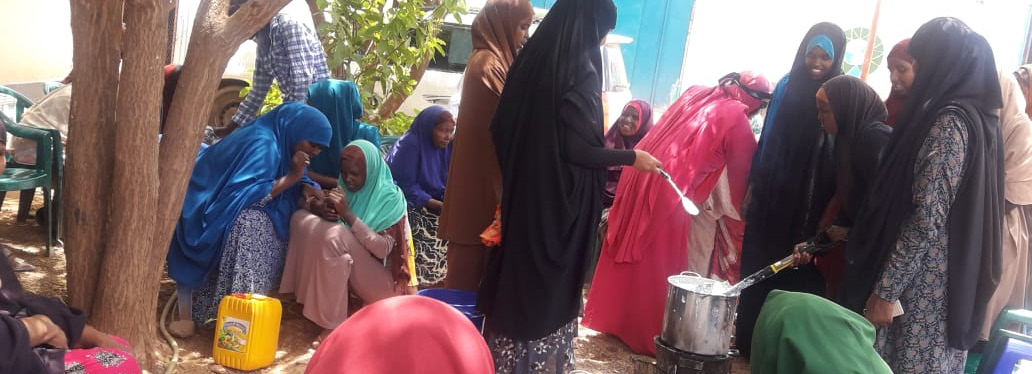On April 3rd & 4th, 2019, World Vision Somalia hosted a 2-day workshop – teaching soap making and important hygiene practices in the Community of Doolow , Somalia. Bradford Soap Works generously provided the soap base, a critical supply for the workshop. Thanks to your donations, World Vision Somalia staff equipped participants with new skills and empowered a community with safe health practices!
Report compiled by: Aisha Shidow Mohamed, WASH Project Assistant, World Vision Somalia

Workshop Introduction and opening
The workshop was officially opened by a World Vision staff member, Abdullah Nadir Mohamed with a prayer and explanation on the importance of making the soap. The first day started with introduction where every participant introduced themselves.
Expectations and responsibilities for learning
Most of the participants’ expectation was to learn how to make soap and take the responsibilities of making use of the skills in future for income generating projects.
Introduction to soap making The main aim of WASH is to reduce diseases. Hygiene is composed of personal hygiene, environmental hygiene, domestic hygiene, food hygiene, and water hygiene. Good hygiene practices reduce the incidence of diseases such as trachoma, scabies, skin and eye infection, and diarrheal related diseases like cholera and dysentery.  The key to improving hygiene practices among the communities and children is promoting behavioral change.
The key to improving hygiene practices among the communities and children is promoting behavioral change.
Keeping hands and bodies clean is one of the most important steps that can be taken to avoid getting sick and spreading germs to others.
Many diseases and germs are spread by not washing hands with soap and clean running water. Soap is part of hygiene, which is a major component in WASH. During distribution of hygiene kits, organizations cannot meet all the needs of the affected population with soap and it is not sustainable to distribute soap all year round. Soap making from soap base presents a more cost-effective  way of providing soap to vulnerable communities, and can also be used to promote business skills, especially among women and other vulnerable members of the community.
way of providing soap to vulnerable communities, and can also be used to promote business skills, especially among women and other vulnerable members of the community.
How to make soap
Supplies:
- Soap Base (Powder or chunks)
- Pots
- Water
- Heat source
- Mold
- Small amount of oil

Procedure:
- Fill a pot half-way with water, and let the water boil. Very hot water makes the soap melt evenly.
- Add the soap chunks into the boiling water, and a batch of salt to make the soap melt evenly.
- Mix the soap constantly, otherwise it will burn. Avoid producing foam, which makes the soap look lighter.
- Prepare the mold by applying some oil or liquid fat to help release the soap from the mold.
- It takes 40 to 60 minutes to get the desired consistency depending on the amount of water used and the size of the pot.
- Pour the melted soap in to the mold, press the gelatinous soap with a spoon against the mold to be sure there are no air bubbles, then cover the mold with a lid.
- On the following day, remove the soap from the mold onto a clean table
- Measure and decide what size of soap you want. Cut the soap into bars and then leave them for some days to dry and harden.


Comments